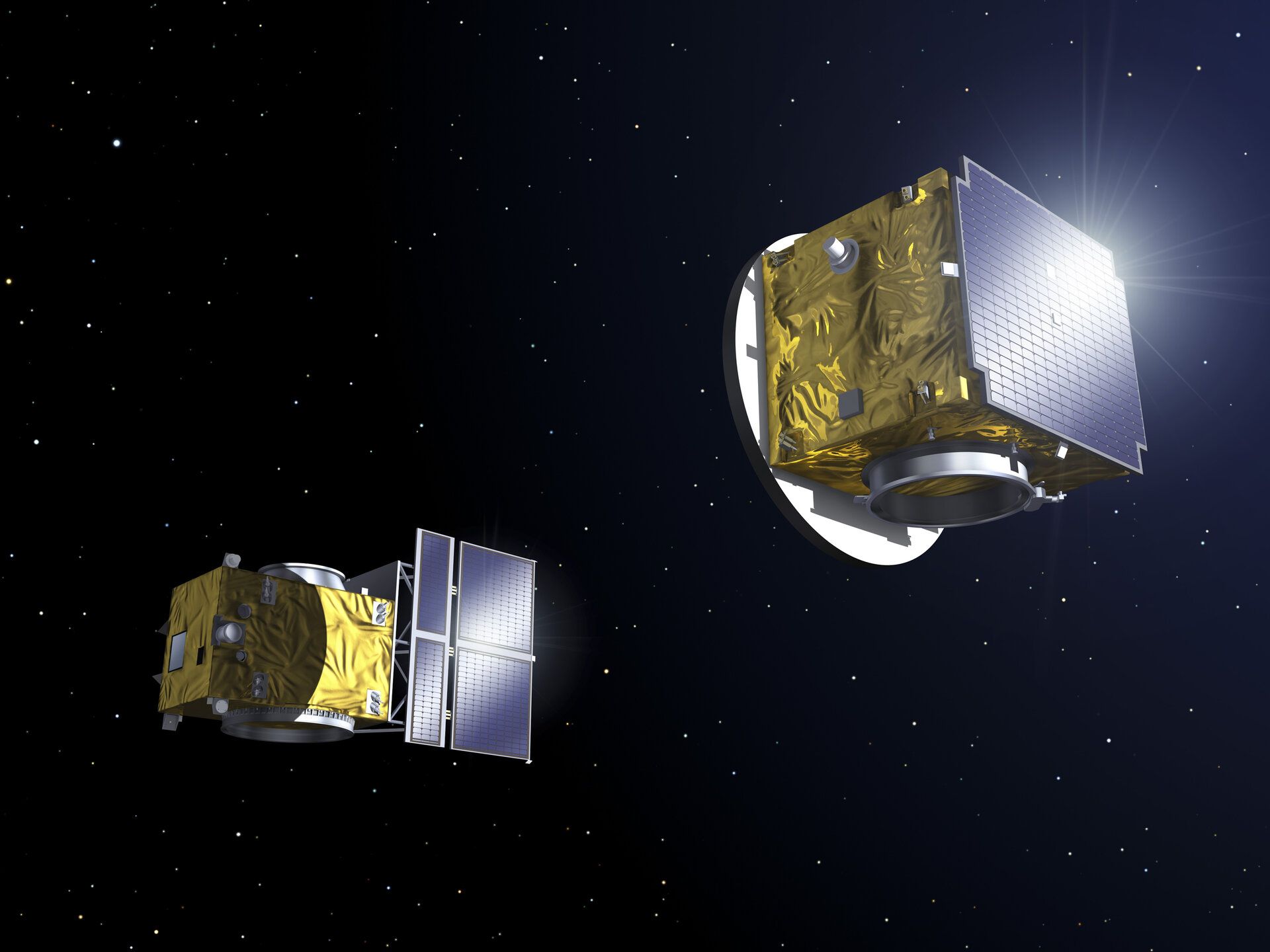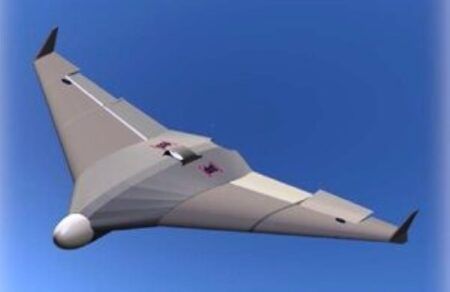ESA’s double-spacecraft precision formation flying mission, Proba-3, is due to be launched from India next week.
The launch is planned for December 4 via a PSLV-XL launcher by the Indian Space Research Organisation, ISRO.
The two spacecraft will maintain positions relative to each which will remain accruate to within a few millimetres during its mission, a feat never achieved before. To achieve this they will use a suite of sensors, including inter-satellite radio links, Global Navigation Satellite System receivers, visual imaging of LEDs and – for the most precise positioning at closest range – a laser metrology system.
Seen in the above the above infrared photograph is the reflected laser beam from that metrology system. The photograph was acquired during on-ground calibration testing performed by ESA, MDA and Centre Spatial de Liège personnel which took place at Redwire Space in Kruibeke, Belgium, in February.
The goal of Proba-3 is to achieve artificial solar eclipses on demand. Proba-3’s Occulter spacecraft will cast a precisely-controlled 8cm shadow onto its Coronagraph spacecraft 150m away for six hours at time.
The laser is seen being fired from the Occulter spacecraft towards the Coronagraph’s retroreflector, designed to reflect it back in precisely the same direction it originated from. In addition a set of Shadow Position Sensors located around the coronagraph aperture will ensure the shadow remains in the correct position.
This mission is being put together for ESA by a consortium led by Spain’s SENER, with participation by more than 29 companies from 14 countries.

The Proba-3 platforms have been designed by Airbus Defence and Space in Spain and satellite integration by Redwire in Belgium. GMV in Spain is responsible for Proba-3’s formation flying subsystem while its main coronagraph instrument comes from Belgium’s Centre Spatial de Liège, CSL.





